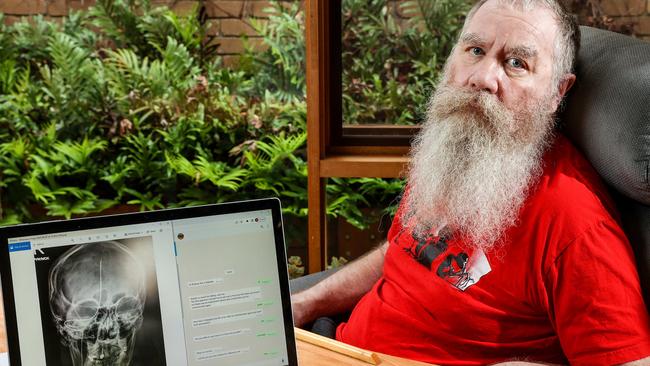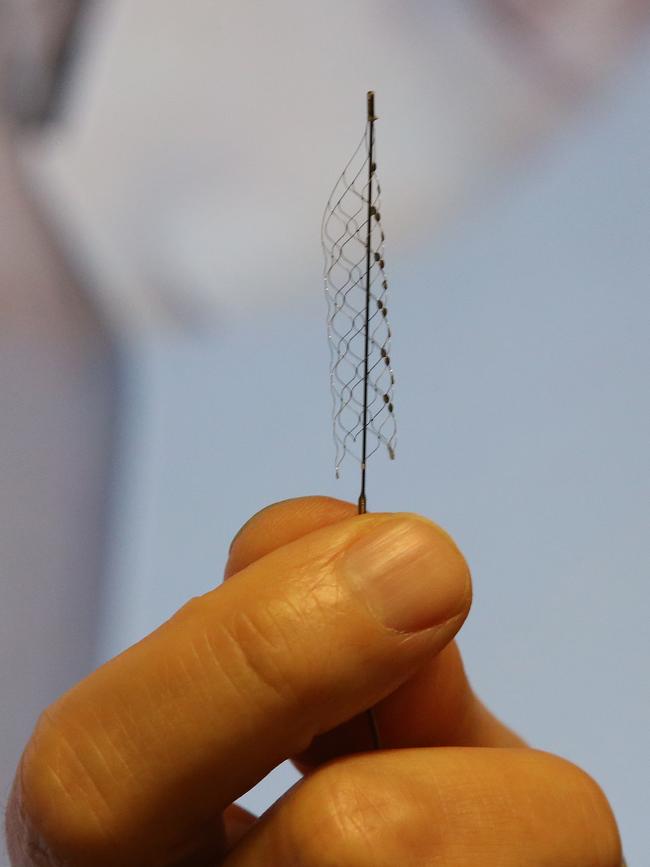Thought-control boost for paralysed thanks to groundbreaking medical device
Groundbreaking device gives paralysed patients the ability to communicate by text and even undertake online shopping.

Paralysed patients have been given the ability to type on computers, communicate by text message and even undertake online banking and shopping thanks to a groundbreaking medical device that is implanted into the brain and allows an individual to control a digital device with their thoughts.
The implantable device known as the Stentrode has been developed by Australian medical technology company Synchron Inc, becoming the first brain-computer interface to gain the approval of the US Food and Drug Administration for permanent implants as part of a global trial.
It beats Elon Musk, who has been attempting to develop the same technology.
The stent-like device is implanted via the jugular vein and then fed up through blood vessels in a minimally invasive procedure to lodge inside the part of the brain that controls movement, the motor cortex. The Stentrode contains a network of tiny electrodes that record brain signals.
When a person thinks about moving a particular part of their body, their brain transmits a distinct signal. The Stentrode is connected to a device in the chest that sends the neural signals to a transmitter, in which artificial intelligence learns what each brain signal means, decodes it, and translates the signals into specific commands. The transmitter is connected to a computer, and when the paralysed person thinks about moving a particular body part, it gives a command to the computer to select certain letters on a screen so that the individual is able to type.

The Stentrode is the brainchild of vascular and interventional neurologist Tom Oxley, the chief executive of Synchron and an associate professor of medicine at the University of Melbourne.
“The idea is if you put a sensor in the brain, you can bypass the body altogether, because you can see what the brain is trying to do in terms of control of movement,” Professor Oxley said.
“And if you turn that into a digital output, then the part of the brain that was before controlling your hand is now turned into a digital switch that can control anything on a computer.”
Synchron has already trialled the device in Australia and has now enrolled the first patient in a US clinical trial, putting the Stentrode on a path toward possible regulatory approval for wider use in people with paralysis.
Paralysed Melbourne man Rodney Gorhman is one of the Australian patients who has had the Stentrode implanted and says it has transformed his life.
“It’s great,” he said by text.
“This is the beginning of the cracking of the brain’s code,” Professor Oxley said. “And once that has been understood, and opened up, there is going to be an enormous renaissance in brain therapies that weren’t previously considered possible.”
David Grayden, a neural engineer at the University of Melbourne, said there was scope in the future for implantable brain devices to control more aspects of life than just digital devices.
“Potentially, a device could be hooked up to a wheelchair to control a wheelchair, or hooked up to a robot arm or anything that a machine could control,” Professor Grayden said.
“Whatever that computer can decode, you could connect to that, and use the decoded signal to control things.
“Another possibility is that we could also stimulate the brain with these implanted devices.”
Synchron hopes the Stentrode device could be on the market within three to five years.



